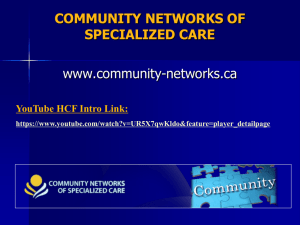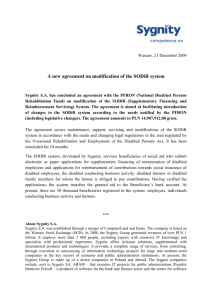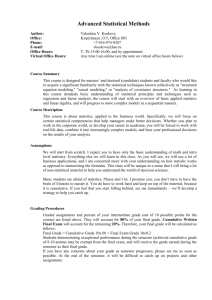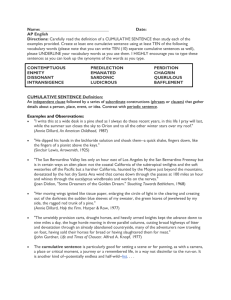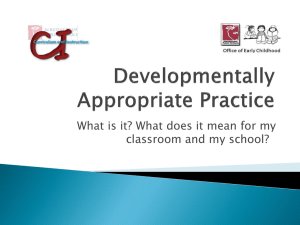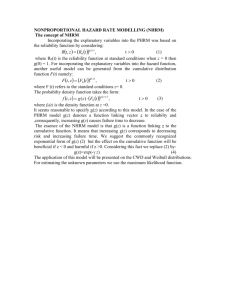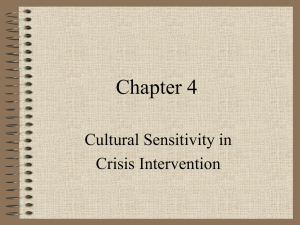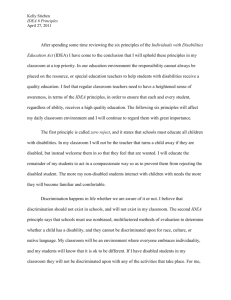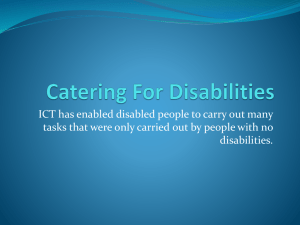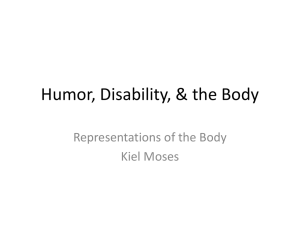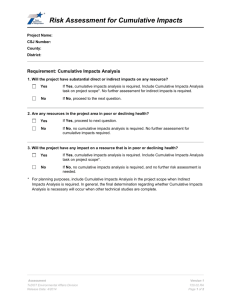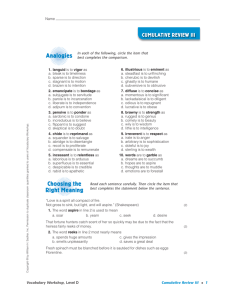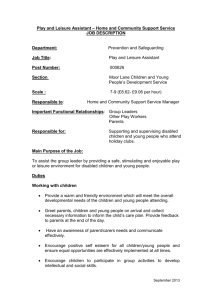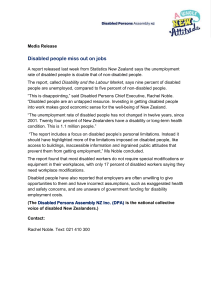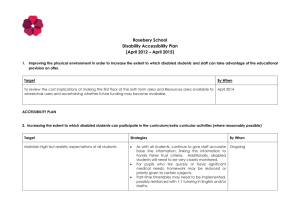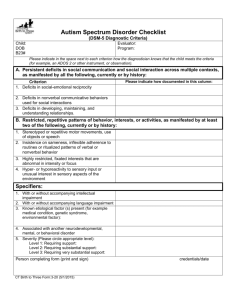CHAPTER 2 Federal Legislation: Early Intervention and Prevention
advertisement
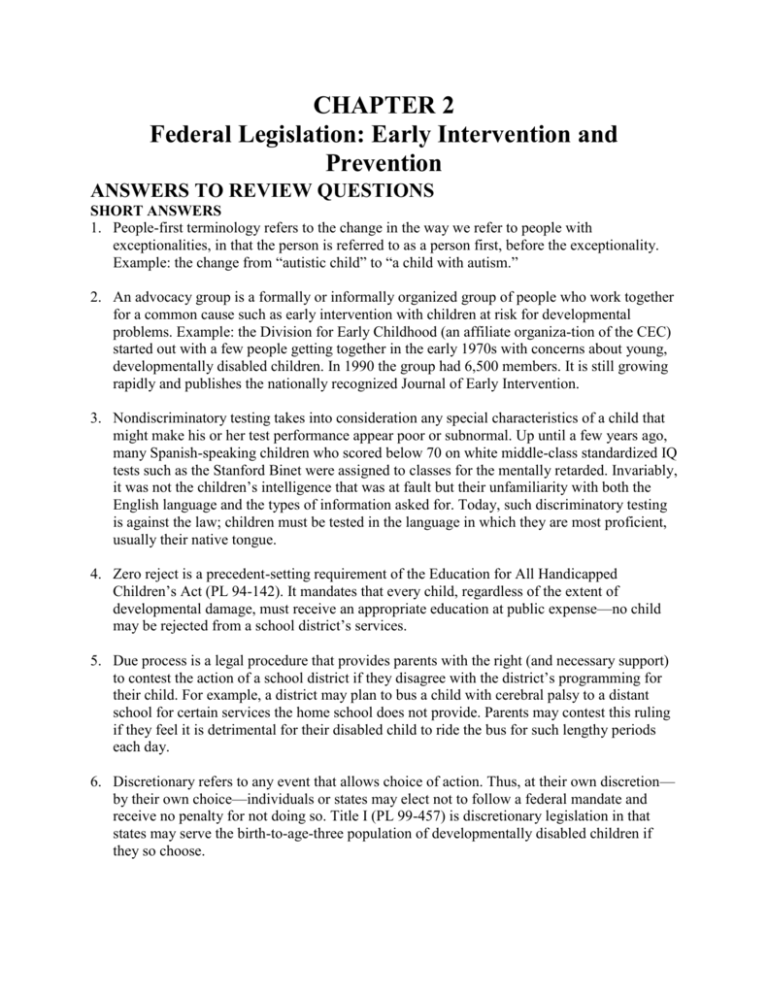
CHAPTER 2 Federal Legislation: Early Intervention and Prevention ANSWERS TO REVIEW QUESTIONS SHORT ANSWERS 1. People-first terminology refers to the change in the way we refer to people with exceptionalities, in that the person is referred to as a person first, before the exceptionality. Example: the change from “autistic child” to “a child with autism.” 2. An advocacy group is a formally or informally organized group of people who work together for a common cause such as early intervention with children at risk for developmental problems. Example: the Division for Early Childhood (an affiliate organiza-tion of the CEC) started out with a few people getting together in the early 1970s with concerns about young, developmentally disabled children. In 1990 the group had 6,500 members. It is still growing rapidly and publishes the nationally recognized Journal of Early Intervention. 3. Nondiscriminatory testing takes into consideration any special characteristics of a child that might make his or her test performance appear poor or subnormal. Up until a few years ago, many Spanish-speaking children who scored below 70 on white middle-class standardized IQ tests such as the Stanford Binet were assigned to classes for the mentally retarded. Invariably, it was not the children’s intelligence that was at fault but their unfamiliarity with both the English language and the types of information asked for. Today, such discriminatory testing is against the law; children must be tested in the language in which they are most proficient, usually their native tongue. 4. Zero reject is a precedent-setting requirement of the Education for All Handicapped Children’s Act (PL 94-142). It mandates that every child, regardless of the extent of developmental damage, must receive an appropriate education at public expense—no child may be rejected from a school district’s services. 5. Due process is a legal procedure that provides parents with the right (and necessary support) to contest the action of a school district if they disagree with the district’s programming for their child. For example, a district may plan to bus a child with cerebral palsy to a distant school for certain services the home school does not provide. Parents may contest this ruling if they feel it is detrimental for their disabled child to ride the bus for such lengthy periods each day. 6. Discretionary refers to any event that allows choice of action. Thus, at their own discretion— by their own choice—individuals or states may elect not to follow a federal mandate and receive no penalty for not doing so. Title I (PL 99-457) is discretionary legislation in that states may serve the birth-to-age-three population of developmentally disabled children if they so choose. 7. Cumulative deficits are the adding-to, piling-up, or snowballing of a problem, as when the cumulative grade point gets lower and lower, putting the student even further from graduation with each transcript. Many untreated or improperly treated handicapping conditions result in cumulative deficits that may eventually render the child totally helpless (as in the case of contractures) or totally blind (as in the case of certain eye disabilities). MATCHING 1. C 3. J 5. A 2. H 4. F 6. D 7. I 8. B 9. G 10. E 11. K



